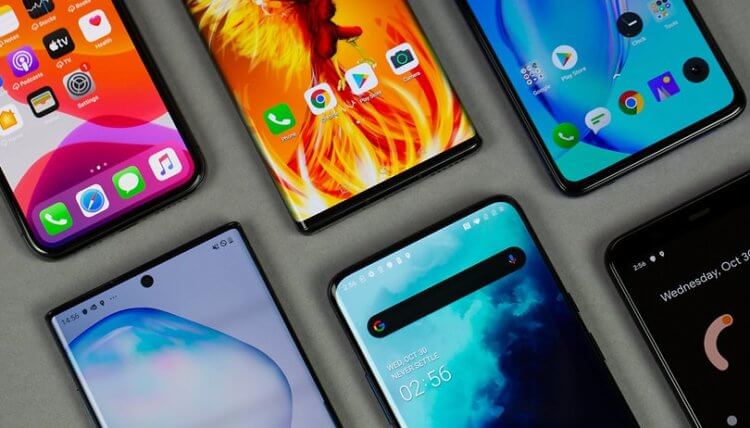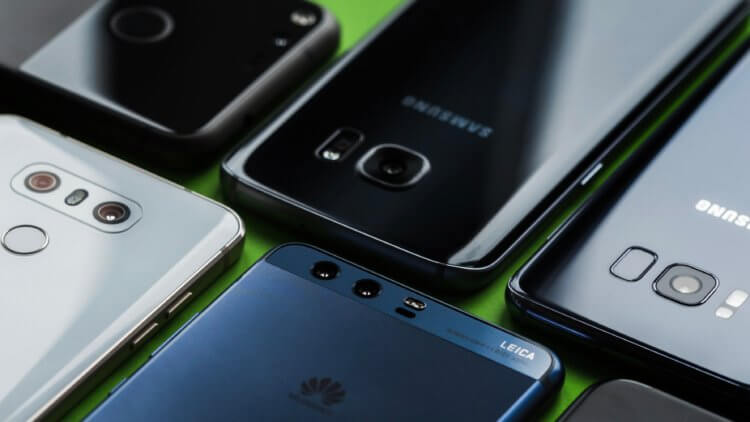Choice is always great. Since the concept of sub-flags appeared, and inexpensive smartphones began to be divided into mid-budget, budget and ultra-budget, life has become much more interesting. Now consumers have the opportunity to choose a device according to their taste and finances, without sacrificing anything. Want a camera phone? You to Xiaomi. Looking for an affordable smartphone with flagship features? Behind such k Honor. The soul asks for something advanced that will remain relevant for a long time? Ask Samsung. But don't you think that there are too many smartphones? But everything is just beginning.

Smartphones have nowhere to go. Don't you think?
Don't get me wrong, I like to have a choice, not to worry – buy a smartphone now, but in installments, or pay in cash, but then, when the required amount is reached. But just a few years ago, everything was like this, because the market was literally black and white, because almost 100% consisted of flagships and budget models. However, the speed with which many manufacturers are releasing new smartphones today really scares me, and I would like them to hold back a little.
Why do you need so many smartphones?

Too many smartphones are produced by manufacturers, and many of them are exactly the same
My complaint is that many brands have grown insanely. Let me explain using Samsung as an example. Previously, the Korean company had two flagship lines, the releases of which were separated by five to six months, and they themselves consisted of one smartphone. Then the Galaxy S line expanded and was replenished with another model that had an increased screen diagonal (we do not take into account the Galaxy S6 and S7 with their Edge modifications). This was logical, because users were given a choice – a large or a small smartphone. Last year Samsung went further and released not only the Galaxy S10, but also the Galaxy S10e, Galaxy S10 + and Galaxy S10 5G. This is where everything went wrong.
No, again, the expansion of the lineup looked quite logical, because two new smartphones (S10e and S10 5G) were needed in order to occupy the empty niches of conditionally available flagships and advanced devices with support for fifth generation networks. and the Galaxy S10 + fits quite well into the previously formed segment of phablets. But behind three modifications, the original model completely faded. Think for yourself, who in general needed it, if devices appeared on sale that are better than her in everything? The Galaxy S10e turned out to be noticeably cheaper, the Galaxy S10 + was larger, and the Galaxy S10 5G was banally more functional. It turns out that the simple Galaxy S10 could have been abandoned and no one would have noticed.
How to understand modern smartphones?
However, this problem concerns not only Samsung, despite the fact that its scale of disaster is not yet as serious as, for example, the Chinese. Take Xiaomi, Vivo, Huawei or anyone else and browse their assortment. I guarantee that at best you will find several smartphones that match in characteristics and price, and at worst you will not even be able to figure them out, there are so many of them. For the same Huawei such devices can be counted 3-5 pairs, even without straining, and even then, if you analyze only the latest news. If you plunge a little deeper into the past, you can lose count.
Why do manufacturers need it? Someone will say that in this way they are trying to occupy all market niches at once and give users the opportunity to choose exactly the smartphone that they want. But, I confess to you honestly, I have never seen a person who, with firm confidence, would go to the store and look for exactly Honor 20, and not Nova 5T (spoiler: this is the same smartphone with different names ). It got to the point that the manufacturers themselves have already ceased to have enough names to somehow name their smartphones, not to mention the hardware. As a result, naming began to use not only numbers, but also comparative degrees, additional letters, signs like Pro or Neo. But there is no real difference between them. It’s not funny yourself?
